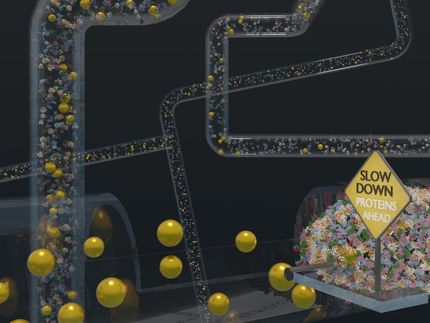Novel nanoparticles for image-guided phototherapy could improve ovarian cancer treatments
Scientists are investigating a biodegradable nanomedicine that can selectively destroy ovarian cancer cells left behind after surgery. These findings are a step forward in the development of targeted therapies for hard-to-treat cancers.
Oleh Taratula, Ph.D., an assistant professor in the Oregon State University College of Pharmacy and colleagues are currently evaluating the potential of molecules called fluorophores to act as internal trackers - injected into the bloodstream before surgery to guide surgeons to residual cancerous cells. Building on this previous work, Taratula is investigating a novel technology that has the ability to locate ovarian tumor cells in the body via a fluorescent signal and destroy them with heat.
The researchers constructed a silicon naphthalocyanine loaded biodegradable polymeric nanoparticle (SiNc-PNP) with near-infrared (NIR) optical properties required for imaging and treatment of deep-seated tumors. After successfully confirming its functionality, the SiNc-PNPs were administered intravenously into mice bearing ovarian cancer tumors. The SiNc-loaded nanoparticles were shown to accumulate predominantly in tumors after 24 hours. The team also demonstrated that the nanoparticles were cleared from the animal's body within 96 hours, an important characteristic for similar nanoplatforms in development, since the U.S. FDA requires all injected contrast agents to be completely vacant from the body in a reasonable time period. Under fluorescence imaging guidance, the tumors were exposed to NIR light for 10 minutes. Out of a total of five mice treated with phototherapy, 100 percent showed complete tumor eradication and no evidence of cancer recurrence after one month. During the course of the study none of the mice treated exhibited weight loss or changes in behavior, or died.
"Given the current barriers associated with existing image guided surgery and phototherapy methods, we set out to create a better nanoplatform that serves as useful tools for surgeons," said Taratula. "These challenges exist because certain compounds are not cancer-specific, demonstrate low fluorescence and phototherapeutic efficiency and gradually fade under light, leading to false negative results. Our nanoparticles are overcoming these issues, acting as an extra pair of eyes and scissors by providing real-time imaging and phototherapy treatment during surgery."
Taratula's team plans to perform image guided surgery in conjunction with their platform on mice using other types of tumor models before moving into large animals and human studies.
Other news from the department science
These products might interest you
Most read news
More news from our other portals
See the theme worlds for related content
Topic World Spectroscopy
Investigation with spectroscopy gives us unique insights into the composition and structure of materials. From UV-Vis spectroscopy to infrared and Raman spectroscopy to fluorescence and atomic absorption spectroscopy, spectroscopy offers us a wide range of analytical techniques to precisely characterize substances. Immerse yourself in the fascinating world of spectroscopy!

Topic World Spectroscopy
Investigation with spectroscopy gives us unique insights into the composition and structure of materials. From UV-Vis spectroscopy to infrared and Raman spectroscopy to fluorescence and atomic absorption spectroscopy, spectroscopy offers us a wide range of analytical techniques to precisely characterize substances. Immerse yourself in the fascinating world of spectroscopy!
























































